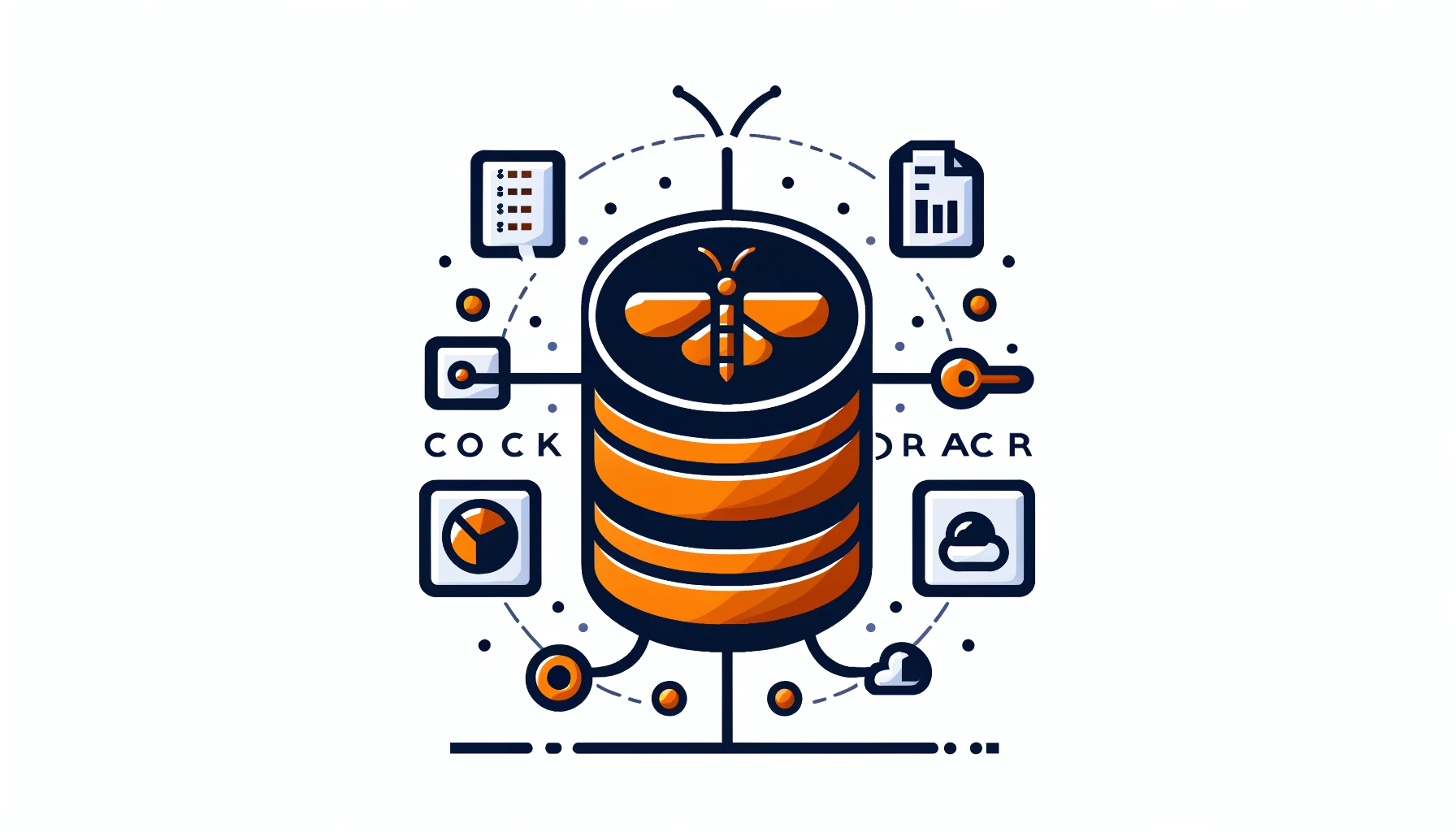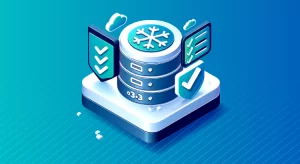
CockroachDB Client

Introduction
When working with databases, having the right client is crucial for efficient management and interaction. This piece demonstrates the process of linking to CockroachDB. We will cover using the CockroachDB clients and client drivers like ‘cockroach sql’, JDBC, and the Python library. Additionally, we’ll discuss the possibility of using DBeaver with CockroachDB.
This article is certainly suitable for beginners starting with CockroachDB.
CockroachDB command line client
The CockroachDB SQL client also goes by the name CockroachDB CLI. Command line client is a tool that allows you to work with a CockroachDB by using SQL commands in the terminal. It lets you connect to a CockroachDB server, run SQL queries, and manage databases from the command line.
Key features of the CockroachDB SQL client include:
- SQL client has an interactive shell for entering and executing SQL statements one by one. It allows you to easily explore and manipulate data in your CockroachDB databases.
- Batch mode: You can also use the SQL client in batch mode, where you can execute SQL statements stored in a file. This is useful for running scripts or executing a series of SQL statements in a single run.
- Database management: The SQL client helps you manage databases by creating databases, tables, indexes, and users. It also allows you to change or delete database objects.
- Query execution: You can use SELECT, INSERT, UPDATE, and DELETE to search and change data in your CockroachDB databases.
- Transaction control in SQL client lets you manage transactions using statements like BEGIN, COMMIT, and ROLLBACK. You can use these statements in scripts or interactive sessions.
To start using the CockroachDB CLI, follow these steps:
- Install CockroachDB on your system.
- Open a terminal and run the cockroach sql command.
- Connect to your CockroachDB cluster using the appropriate connection parameters.
Here’s an example of connecting to a local CockroachDB cluster:
$ cockroach sql --insecure --host=localhost --port=26257
Once connected, you can execute SQL statements and manage your databases using the CockroachDB CLI.
Connecting with JDBC
CockroachDB supports connectivity through JDBC drivers, allowing you to integrate it with various applications and tools. To connect using JDBC, you’ll need to include the CockroachDB JDBC driver in your project’s dependencies. Here’s an example of establishing a JDBC connection:
String url = "jdbc:postgresql://localhost:26257/defaultdb?sslmode=disable"; Connection conn = DriverManager.getConnection(url);
When connecting to a database using JDBC, there are several authentication options available to ensure secure access. One way to log in is by using a username and password. This allows the user to access the database. This helps to verify the identity of the user and prevent unauthorized access.
Besides using a username and password, SSL/TLS encryption can protect communication between the client and the database server. This technology encrypts data between the client and server, preventing others from seeing it. SSL/TLS encryption keeps your login details and data safe from hackers.
You can make JDBC connections more secure by using username/password and SSL/TLS encryption. This helps reduce the risk of unauthorized access and data breaches. Implementing these security measures is important for organizations to protect their databases and sensitive information from potential threats.
DBeaver Compatibility
Users can use DBeaver, a popular database management tool, with CockroachDB. To connect DBeaver to your CockroachDB cluster, follow these steps:
- Install DBeaver on your system.
- Create a new database connection in DBeaver.
- Select “CockroachDB” as the database type.
- Provide the necessary connection details, such as the host, port, database name, and authentication credentials.
DBeaver allows you to view your CockroachDB databases and perform various database tasks using its user-friendly interface. You can also run SQL queries with DBeaver.
DBeaver uses the PostgreSQL JDBC driver to connect to CockroachDB. However, not all PostgreSQL features may be available or supported by CockroachDB. CockroachDB aims to maintain high compatibility with PostgreSQL, but there may be some differences in functionality or syntax. We will discuss the PostgreSQL and CockroachDB compartibility in a fiew paragraphs.
When working with CockroachDB in DBeaver, you can utilize the standard PostgreSQL SQL syntax and commands supported by CockroachDB. DBeaver’s SQL editor and other database management features will work seamlessly with CockroachDB, allowing you to interact with your databases efficiently.
CockroachDB in Python Applications
For Python developers, CockroachDB provides a Python library that simplifies database interactions. To start using the CockroachDB Python library, install it using pip:
$ pip install psycopg2-binary
Here’s an example of connecting to CockroachDB and executing a simple SQL query using the Python library:
import psycopg2
conn = psycopg2.connect("postgresql://username:password@localhost:26257/defaultdb?sslmode=disable")
cur = conn.cursor()
cur.execute("SELECT * FROM users")
results = cur.fetchall()
print(results)The CockroachDB Python library supports various operations, including executing SQL statements, handling transactions, and retrieving query results.
We should note here, there is also psycopg3 available.
Have you noticed psycopg?
CockroachDB builds on PostgreSQL. Like Redshift. CockroachDB mimics PostgreSQL’s functionality and can perform most of the same tasks with SQL. CockroachDB works well with PostgreSQL tools, drivers, and libraries, so developers who know PostgreSQL can easily use CockroachDB.
People use psycopg2 to connect to CockroachDB in Python because it is a widely used PostgreSQL adapter for Python. Since CockroachDB is PostgreSQL-compatible, you can use psycopg2 to establish a connection and interact with CockroachDB databases.
To connect to CockroachDB using psycopg2, you can use the standard PostgreSQL connection URL format. Just specify the host, port, database name, and authentication details. CockroachDB’s compatibility with PostgreSQL’s wire protocol allows psycopg2 to communicate seamlessly with CockroachDB.
Python developers can easily use CockroachDB in their applications by leveraging its PostgreSQL compatibility and using the psycopg2 library. This allows them to benefit from its distributed and scalable architecture.
CockroachDB Serverless Cluster
A CockroachDB Serverless cluster is a fully-managed, cloud-hosted version of CockroachDB provided by Cockroach Labs. You can use CockroachDB without having to handle the infrastructure yourself.
Use ‘ccloud‘ command line interface (CLI) to connect the serverless cluster. As you just signed into the cloud system there are no clusters. You can create a new cluster in the web-based CockroachDB cloud console (requires login) or using this command line tool.
Conclusion
This article discusses different methods to connect to CockroachDB. These methods include using the CockroachDB CLI, JDBC, and the CockroachDB Python library. We also discussed the compatibility with DBeaver, a popular database management tool.
You can use these options to easily work with your CockroachDB clusters. You can also run SQL commands, and manage your distributed databases. CockroachDB provides different client options for you to choose from. Several ways exist to access CockroachDB.
These include using a command-line interface, GUI tools like DBeaver, and libraries such as the CockroachDB Python library.
For user-friendly and flexible tools for database security, audit, and compliance, consider exploring the solutions offered by DataSunrise. DataSunrise usually works as a reverse proxy to protect your database when some client applications work with it. Our team would be happy to provide an online demo to showcase our product capabilities.
